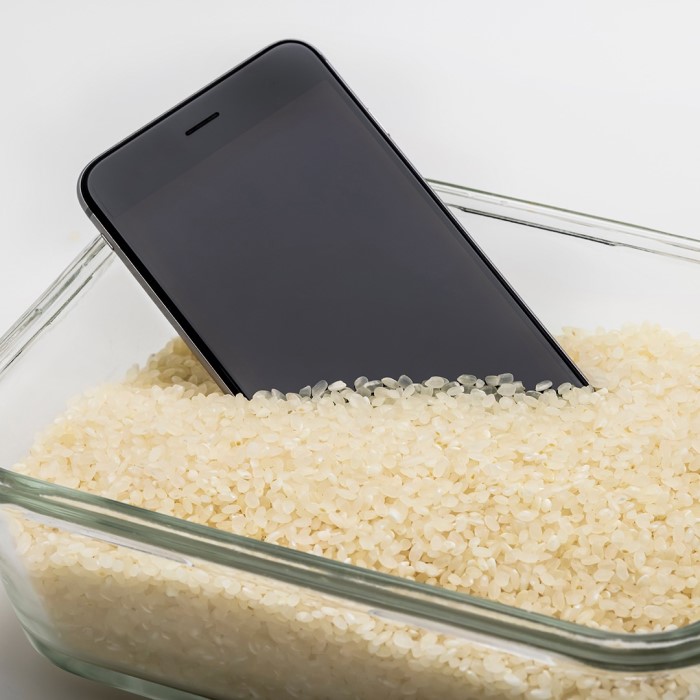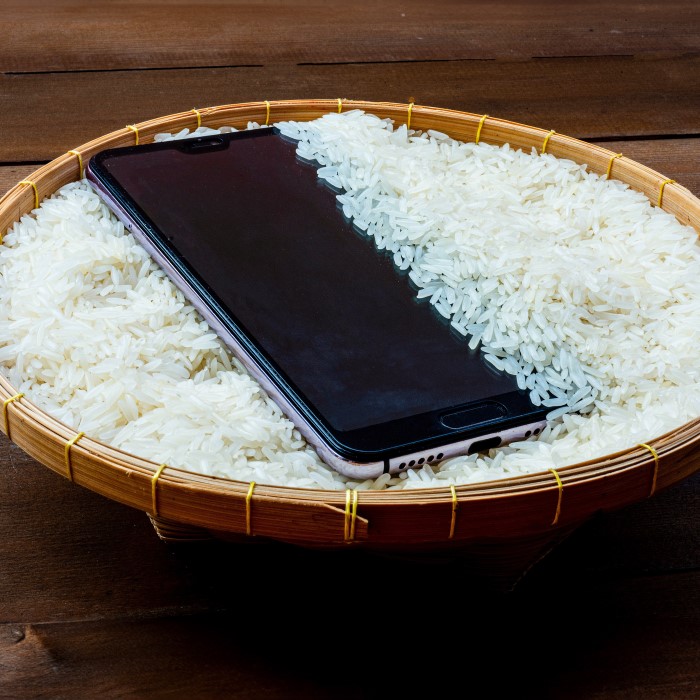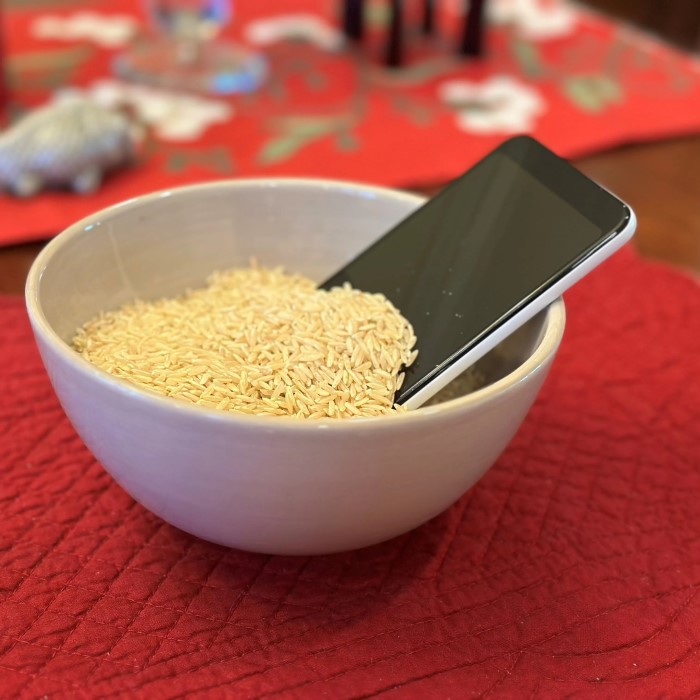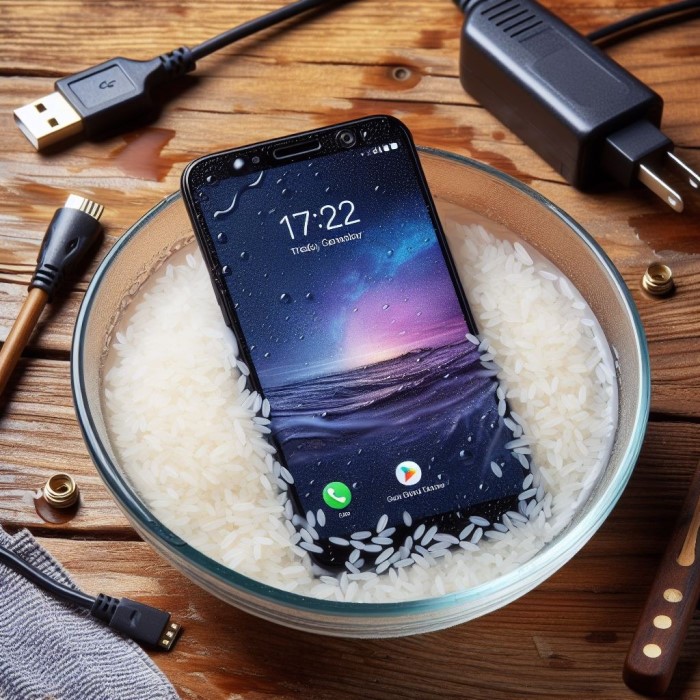Introduction: The Common Solution to Phone Water Damage
In an era dominated by smartphones, a water-damaged device can provoke panic among users. Whether it’s an accidental spill, a drop into a pool, or a splash of rain, water and electronics don’t mix well. One of the most common home remedies for rescuing a wet phone is the age-old adage: “how does putting your phone in rice work?” For years, this technique has been circulated as a quick fix for drying out devices, claiming that rice can effectively absorb moisture from inside phones.
But how accurate is this advice, and does it really work? In this article, we’ll explore the scientific basis behind this method, its effectiveness, and whether there are better alternatives for drying out your device. Understanding the realities of moisture recovery can save you time, money, and possibly your phone.
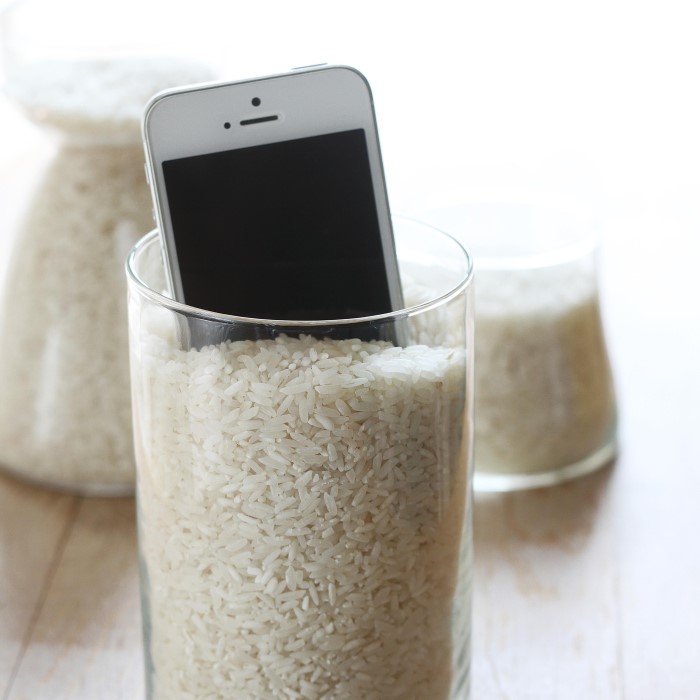
Understanding the Mechanism: How Rice Absorbs Moisture
1. The Science of Absorption
To grasp how putting your phone in rice might work, it’s essential to delve into the science of moisture absorption.
Desiccants Explained
- Definition of Desiccants: Desiccants are substances specifically designed to absorb moisture from the air. These materials help create a dry environment, which can be beneficial for preserving items that are sensitive to humidity, including electronics.
- Natural Properties of Rice: Rice is widely recognized as a natural desiccant. This means that it possesses moisture-absorbing properties, making it a commonly suggested material for drying out wet items, including phones.
- Mechanism of Action: When you place a wet phone into a container full of rice, the rice is expected to perform its role as a desiccant by drawing moisture out of the phone. The moisture moves from the higher concentration within the phone to the lower concentration in the surrounding rice, effectively helping to dry out the device.
- Common Usage: The use of rice as a desiccant is not limited to electronics. It is also used in food storage, medication preservation, and other applications where moisture control is essential. Many people have used rice in various drying applications due to its availability and low cost.
Porous Structure
- Structure of Rice Grains: Rice grains have a unique porous structure that plays an essential role in its moisture-absorbing capabilities. The tiny holes within each grain allow it to soak up water effectively, enhancing its function as a desiccant.
- Absorption Capability: This porous nature enables rice to attract and hold moisture from the surrounding air. When introduced to a high-moisture environment, the rice actively works to draw in excess water vapor.
- Limitations of Rice as a Desiccant: Although rice can absorb moisture, it may not be as effective as other specialized desiccants. For instance, materials like silica gel are designed specifically for this purpose and can absorb moisture at a much faster and more efficient rate.
- Comparative Effectiveness: Silica gel desiccants can absorb moisture without becoming saturated as quickly as rice, allowing them to maintain their effectiveness for a longer duration. As a result, while rice is better than nothing, those seeking a more reliable solution may prefer to use silica gel or other commercially available desiccants.
2. How the Process Works
How does putting your phone in rice work? When submerged, the moisture inside your phone can be a significant threat to its electronic components.
Creating a Low-Humidity Environment
- Moisture Absorption: When a phone is placed in a bowl of rice, it finds itself in a unique environment. The rice begins to absorb moisture from the air around it, which includes any humidity that may escape from the phone.
- Effect on Internal Moisture: As the rice absorbs moisture from the surroundings, it creates a low-humidity environment. This low-humidity setting is essential because it encourages the moisture trapped inside the phone to evaporate.
- Theoretical Drying Process: In theory, the active absorption of moisture by the rice allows the liquid within the phone to gradually escape. Ideally, this process helps to dry out the internal components of the device, potentially restoring functionality.
- Limits of the Environment: It’s important to note that while rice creates a low-humidity environment, it might not be a perfect solution. Factors such as the amount of moisture inside the phone, the surrounding air quality, and the rice’s ability to absorb moisture play crucial roles in determining the effectiveness of this method.
Time Required
- Absorption Duration: The effectiveness of the rice method does not occur immediately. When dealing with moisture, patience is key. The absorption process takes time and should not be rushed.
- Ideal Time Frame: To achieve the best results, it is advisable to leave the phone in rice for an extended period. The optimal time range is typically 24 to 48 hours. This timeframe provides sufficient opportunity for the rice to absorb the moisture thoroughly.
- Allowing for Moisture Transfer: During this period, moisture inside the phone gradually transfers out of the device and into the rice. The longer the phone remains in the rice, the more effective the moisture transfer is likely to be.
- Adjusting Expectations: While a duration of 24 to 48 hours is recommended, it is essential to keep in mind that not all phones respond the same way. If substantial damage has already occurred due to prolonged exposure to moisture, there is no guaranteed recovery, regardless of how long the phone remains in the rice.
FAQ: Does Rice Actually Work for Phones?
1. Effectiveness of Rice as a Drying Agent
While many swear by rice as a solution, research and expert opinions may tell a different story.
- Mixed Conclusions: Some phone users have reported success in salvaging their devices after using the rice method. However, studies indicate that this method may not be as effective as people believe, and moisture may remain trapped in hard-to-reach areas.
2. Expert Opinions
Experts from the tech industry generally advise caution regarding this method.
- Limited Effectiveness: Many suggest that rice should not be your first option. While it can help in some cases, relying on it may not guarantee results. Switching to better alternatives can be a proactive approach.
Will Putting My Phone in Rice Fix It?
1. Assessing Water Damage
Water damage can manifest in various ways, depending on the severity of exposure.
- Understanding Internal Damage: If your phone has been submerged in a significant amount of water or for an extended period, simply putting it in rice may not fix the underlying issues. Water can cause corrosion and irreversible damage if not addressed immediately.
2. Temporary Solution
Putting your phone in rice may offer temporary relief rather than a permanent fix.
- Initial Steps: Instead of solely relying on rice, take immediate action by powering off the phone, removing any cases, and extracting the SIM card and SD card. These initial steps can drastically improve your phone’s chances of recovery.
How Do I Dry Out My Phone Quickly?
1. Immediate Action Steps
When an accident occurs, quick action is crucial for saving your device.
- Shake It Out: Start by gently shaking your phone to remove excess water. Avoid shaking it forcefully, as this could push water deeper into the device.
- Disassemble If Possible: If your phone allows it, remove its case, battery (if replaceable), SIM card, and memory cards. This will help the phone dry faster and reduce damage.
2. Alternative Drying Methods
Rather than relying on rice alone, consider other effective techniques.
- Use of Silica Gel: Silica gel packets are better desiccants than rice and can effectively absorb moisture. Place your device in a container with several silica gel packets for a better chance of recovery.
- Air Drying: Put your phone in a well-ventilated area at room temperature. Avoid using fans or heaters directly on the phone, as excessive heat can damage components further.
How Long Does a Phone Have to Be in Rice to Dry?
1. Recommended Drying Time
If you choose to use the rice method, how long should you leave your phone submerged in it?
- General Guidelines: Experts recommend leaving the phone in rice for at least 24 to 48 hours. This duration allows the rice enough time to absorb moisture from the device effectively.
2. Monitoring Progress
Regularly check on your phone during the drying period.
- Testing Functionality: After 48 hours, cautiously check if the phone powers back on. Be prepared for the fact that the longer it was submerged, the less the likelihood it will work after drying.
Conclusion: Exploring Your Options for Water-Damaged Phones
In summary, how does putting your phone in rice work? While it is a popular approach to drying out wet devices, its effectiveness can be limited. Rice can absorb some moisture, but it may not be the best or most reliable method for heavy water damage. Taking immediate action, considering better alternatives like silica gel, and practicing proper phone care can significantly increase your chances of saving your device.
If you find yourself with a wet phone, remember to act quickly, dry it out effectively, and manage your expectations. Ultimately, proactive measures are your best bet for avoiding catastrophic water damage, ensuring your phone remains functional for years to come. By understanding the realities of moisture recovery, you can safeguard your beloved device from the risks of water exposure.
